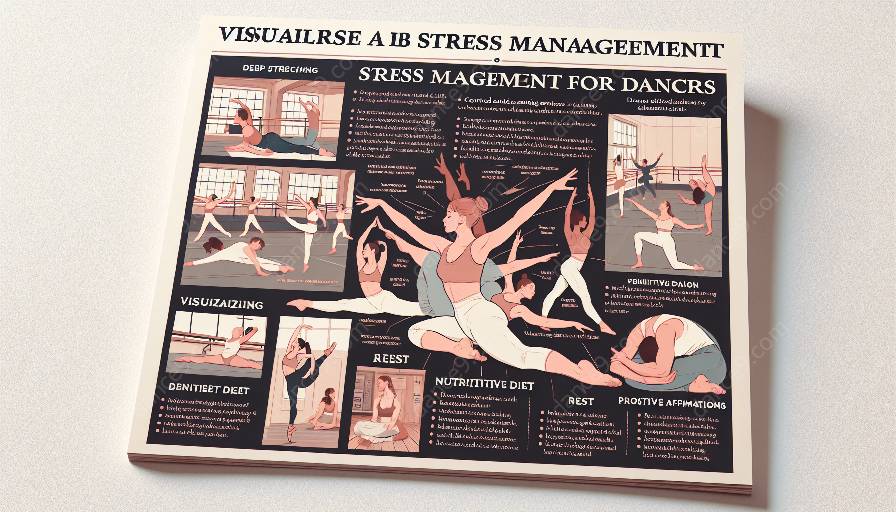Dancers often face significant stress, both physically and mentally, due to the demands of their profession. The impact of stress on dancers' bodies and minds can be profound, affecting not only their performance but also their overall well-being. Understanding how stress affects dancers and implementing effective stress management techniques is crucial for maintaining their physical and mental health.
The Impact of Stress on Dancers
Stress can have a range of effects on dancers, impacting both their bodies and minds. Physically, stress can lead to increased muscle tension, fatigue, and a higher risk of injury. Mentally, dancers may experience anxiety, decreased focus, and emotional strain as a result of stress.
Physical Effects of Stress on Dancers
Stress can manifest physically in dancers through muscle tightness, decreased flexibility, and an increased susceptibility to injuries such as strains and sprains. Additionally, stress can contribute to fatigue and a compromised immune system, leaving dancers more susceptible to illnesses.
Mental Effects of Stress on Dancers
Mentally, stress can result in heightened anxiety, difficulty concentrating, and emotional instability. The pressure to perform at a high level while managing rigorous training schedules and performance demands can take a toll on dancers' mental well-being.
Stress Management Techniques for Dancers
It is essential for dancers to develop effective stress management techniques to mitigate the impact of stress on their bodies and minds. Implementing strategies to manage stress can enhance their overall performance and well-being.
Physical Stress Management Techniques
Physical stress management techniques for dancers can include regular stretching, self-myofascial release using foam rollers, adequate rest and recovery, and body awareness exercises such as yoga and Pilates. By incorporating these practices into their routines, dancers can alleviate muscle tension and reduce the physical toll of stress.
Mental Stress Management Techniques
Dancers can benefit from mental stress management techniques such as mindfulness meditation, deep breathing exercises, visualization techniques, and seeking professional support through counseling or therapy. These approaches can help dancers cultivate mental resilience, manage performance anxiety, and maintain focus amidst stressors.
Physical and Mental Health in Dance
Understanding the importance of physical and mental health in dance is paramount for dancers' long-term success and fulfillment. It is crucial to prioritize both physical and mental well-being to sustain a thriving dance career.
Importance of Physical Health in Dance
Physical health in dance encompasses maintaining optimal fitness, strength, flexibility, and preventing injuries. Dancers should prioritize proper nutrition, hydration, and rest to support their physical well-being, along with engaging in cross-training activities to address muscle imbalances and enhance overall physical resilience.
Importance of Mental Health in Dance
Mental health in dance is integral to dancers' overall well-being and artistic expression. Building resilience, managing stress, seeking mentorship and support, and fostering a positive mindset are essential aspects of maintaining mental health. It is crucial for dancers to address any mental health concerns proactively and seek professional assistance when needed.
In conclusion, the impact of stress on dancers' bodies and minds can be significant, influencing their performance and overall well-being. By acknowledging the effects of stress, adopting effective stress management techniques, and prioritizing physical and mental health, dancers can build sustainable, fulfilling careers while nurturing their holistic well-being.


































